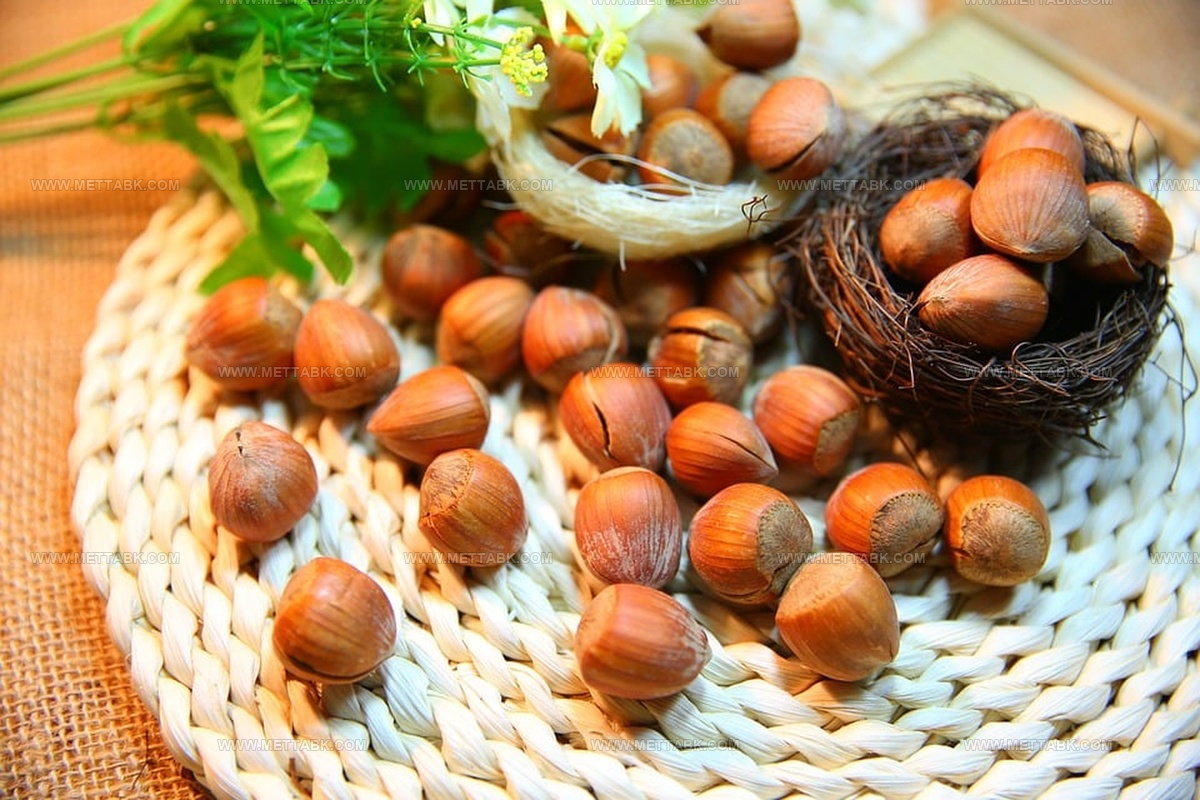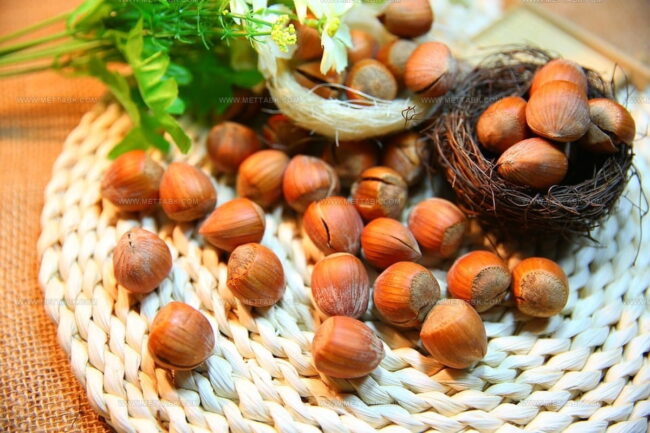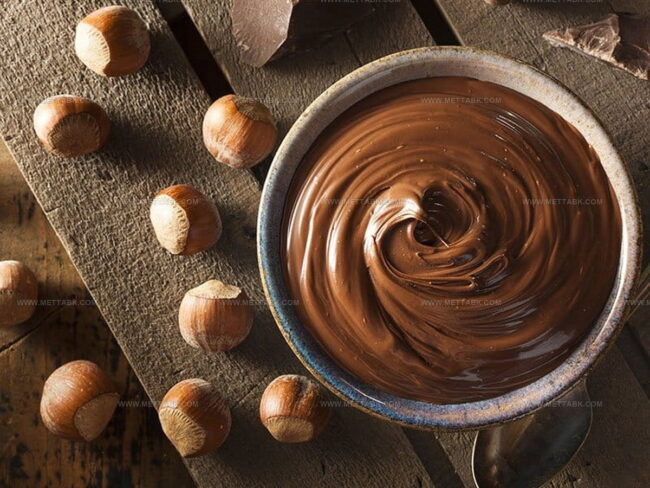What Does Hazelnut Taste Like? A Nutty Journey Worth Taking
Hazelnut flavor intrigues food lovers worldwide with its unique and complex profile.
Many people wonder about this delightful nut's distinctive characteristics.
Culinary enthusiasts frequently encounter hazelnuts in desserts, spreads, and beverages, sparking curiosity about their sensory experience.
Nutty aromas and rich undertones make hazelnuts a fascinating ingredient in global cuisine.
Sweet and earthy notes dance across taste buds, creating a memorable gustatory sensation.
Wondering how hazelnuts transform dishes and delight palates? Understanding their nuanced flavor can elevate your culinary adventures and appreciation for this remarkable ingredient.
Dive into this article to unravel the delectable world of hazelnuts.
Hazelnuts: Basic Overview
Hazelnuts grow on Corylus trees, mostly found in European and American areas like Turkey, Spain, and the United States.
Filberts, another name for hazelnuts, are fruits from hazel trees containing Corylus seeds.
Seeds mature after seven to eight months of pollination, dropping from their husks ready for harvest.
Nuts carry a bean-like scent with a rich, nutty smell.
Their strong flavor makes them super versatile in cooking.
Bakers love using hazelnuts as an excellent alternative to almonds in sweet and savory recipes.
Cooking fans with nut allergies can seek out similar replacements or add a hint of honey to capture comparable taste notes.
How Hazelnuts Taste
Hazelnut flavor stands out with its unique characteristics that set it apart from chocolate.
Rich and creamy, this nut carries subtle notes of mustiness and earthy undertones.
Many describe the taste as buttery and smooth.
Bitter hints come through with a distinctive papery skin.
Most people prefer removing the skin before enjoying hazelnuts.
Roasting brings out deeper flavor profiles in hazelnuts.
Compared to raw versions, roasted nuts offer slightly more intense taste experiences.
Smooth textures combine with satisfying crunchiness, making hazelnuts perfect for adding interesting contrasts to different dishes and snacks.
Hazelnut Flavor Differences by Variety or Origin
Hazelnuts come in different varieties and from many regions, and these factors shape their taste, texture, and how they’re used in recipes:
European Hazelnuts (Filberts)
Grown mainly in Italy and Turkey, these nuts are known for their rich, buttery, and slightly sweet flavor with a hint of earthiness. Italian varieties, like Tonda Gentile, are especially prized for their delicate aroma and smooth texture, making them a favorite for chocolate spreads and pastries.
American Hazelnuts
Often smaller and with thicker shells, American hazelnuts have a stronger, more robust flavor and can be a bit more astringent or woody compared to European types. Their hearty taste makes them great for rustic baking and snack mixes.
Turkish Hazelnuts
Turkey is the world’s top hazelnut producer, and its nuts are creamy, mildly sweet, and balanced, ideal for snacking, roasting, or grinding into pastes.
Oregon Hazelnuts
Grown in the Pacific Northwest, these nuts are fresh, slightly grassy, and have a mellow, buttery profile that shines in both savory and sweet dishes.
Wild Hazelnuts
Foraged wild hazelnuts are often smaller, crunchier, and have a bold, nutty flavor that stands out in trail mixes or homemade granola.
Cooking With Hazelnuts
Hazelnuts bring a smooth, rich feel that pairs perfectly with chocolate and works magic in baked treats.
Bakers love adding these nuts to muffins, cookies, brownies, cakes, bread, and biscotti because of their satisfying crunch.
Hazelnuts carry a warm, earthy smell that hints at chocolate and nutty goodness.
Rich natural oils make them healthy and gentle on sensitive systems.
These nuts add delightful texture to sweets and baked goods.
Chefs mix them into sauces, dressings, and salads for extra flavor.
Small amounts pack a big punch of taste and satisfaction.
How to Toast Hazelnuts for Best Flavor
Toasting hazelnuts brings out their rich, nutty flavor and makes them extra crunchy, perfect for adding to both sweet and savory dishes:
Alternative Method: You can also toast hazelnuts in a dry skillet over medium heat, stirring often until golden and fragrant.
Hazelnuts in Popular Sweets and Chocolates
Hazelnuts are a favorite ingredient in many beloved sweets and chocolates, adding a rich, nutty crunch and deep flavor to all kinds of treats:
Do Hazelnuts Taste Like Chocolate?
Hazelnut's flavor doesn't match chocolate's intensity.
Both share similar taste notes.
Shoppers who dislike hazelnut can select sugar-free options instead.
Nutella might help understand hazelnut's flavor better.
Nutella contains hazelnuts and cocoa, which many enjoy without realizing. Tasting Nutella helps reveal hazelnut's true flavor profile.
Melting Nutella can make its hazelnut taste more noticeable.
Hazelnuts work nicely with chocolate and cocoa, but they don't taste exactly like chocolate alone.
Combining hazelnuts and chocolate creates a wonderful flavor experience.
Someone tasting hazelnuts and detecting chocolate notes might discover something special about these small nuts.
Hazelnut: Nutrition Benefits
Hazelnuts shine as a nutritional powerhouse with incredible health benefits.
These small nuts boast the highest vitamin E concentration possible in such a compact package.
Vitamin E plays a critical role in maintaining body wellness and appearance.
Healthy nails and hair receive protection through vitamin E.
Hazelnuts help shield against inflammation, fatty liver disease, and mental decline while supporting skin health.
Minerals like magnesium and calcium combine with unsaturated fats inside these nuts.
Such nutrients support bodily functions and improve cellular communication.
Hazelnuts work hard to fight chronic heart disease, slow cancer cell development, strengthen muscles, and maintain bone structure.
Digestive health gets a significant boost from hazelnuts.
Dietary fiber helps promote regular bowel movements and reduce cholesterol levels.
Nutritional guidelines suggest women aged 31-50 need 25.2 grams of daily fiber, while men in the same age group require 30.8 grams.
Fiber content makes hazelnuts an excellent choice for supporting digestive system wellness.
Antioxidants in hazelnuts protect cells from free radical damage.
Research shows these nuts can support weight management and decrease future obesity risks.
Powerful nutrients work together to provide comprehensive health benefits in one small package.
Do Hazelnuts Spoil Over Time?
Hazelnuts belong to the nut family, which means they contain oils that can spoil over time.
Exposure to heat and light causes these oils to break down, creating different flavor compounds like aldehydes.
Longer exposure to heat and light intensifies these flavors.
Hazelnuts without shells or with blanched skins tend to be fresher compared to other varieties.
Storage conditions impact hazelnut shelf life significantly.
Room temperature storage limits their lifespan to about one year.
Refrigerators and freezers can extend their usability up to two years.
Detecting spoilage involves tasting kernel samples; bitter flavors indicate the nuts have gone bad.
Cooking with rancid nuts will create unpleasant sour notes in dishes, so immediate disposal is recommended.
Roasted unsalted hazelnuts work best for cooking purposes.
Hazelnut naming can be confusing - they are called filberts when inside their shells, but become hazelnuts after shell removal.
Can Hazelnuts Have Mold?
Hazelnuts do not support mold growth because they lack sugars that fungi like Botrytis cinerea need as a food source.
Botrytis can develop on items such as bread, cakes, wine grapes, and other sugar-rich fruit crops.
Some molds pose health risks, but the specific fungus potentially growing on hazelnuts does not produce toxins.
Watch for warning signs of hazelnut spoilage:
Are Hazelnuts A Common Allergen?
Small amounts of hazelnuts can taste sweet or bitter.
Some people might struggle to identify a natural hazelnut.
Nutty substances could trigger allergic reactions, so caution matters when selecting hazelnuts from natural settings.
Individuals with nut allergies can select imitation extract for similar flavor profiles with slightly sharper herbal notes.
Hazelnut allergy symptoms typically emerge quickly after consuming hazelnuts or related foods.
Reactions range from mild to severe:




Nate Harper
Founder & Recipe Curator
Expertise
Single-Recipe Development, Farm-to-Table Cooking, Seasonal Menu Planning, Culinary Storytelling, Home Kitchen Innovation
Education
Cascade Culinary Institute – Central Oregon Community College
Certificate in Culinary Arts
Focus: Farm-to-table cuisine, sustainable cooking practices, and seasonal recipe creation.
Nate studied under experienced chefs who emphasized local sourcing, minimal waste, and building recipes from fresh, simple ingredients.
Nate Harper is the founder and creative force behind Make, Take, Bake. Raised in the wild beauty of Oregon’s high desert, Nate grew up surrounded by family gardens, farmers’ markets, and home kitchens that celebrated the seasons.
His early love for simple, honest food evolved into a professional passion when he attended Cascade Culinary Institute, where he sharpened his skills in creating recipes that are sustainable, satisfying, and made for everyday life.
Nate’s goal is to make cooking feel accessible, free of fuss, and full of flavor. He believes a single, thoughtfully built dish can stand alone, and sometimes even steal the show.